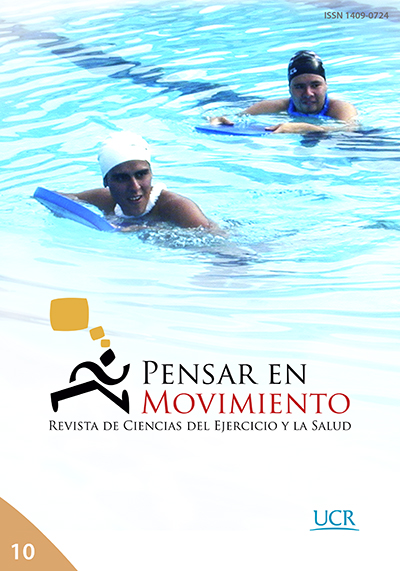Abstract
Carpio-Rivera, E. y Solera-Herrera, A. (2012). Acute effect of resistance, aerobic and combined exercise circuits on blood pressure of hypertensive women. Pensar en Movimiento: Revista de Ciencias del Ejercicio y la Salud, 10 (2), 1-12. The purpose of this study was to observe the acute effect of different exercises executed in circuit on the resting blood pressure of hypertensive women. Nine trained persons (aged 53.22 ± 4.67 years), hypertensive but medicated with enalapril, participated in four training treatments, each carried out on different days under a randomized repeated measures design: (1) A: aerobic training condition (steps training); (2) R: resistance training condition (machine training) (3) AR: aerobic and resistance training condition (alternating aerobic and resistance training every 30 seconds) (4) C: control condition (30 minutes resting). Exercise conditions were performed during 30 minutes at 70% of maximum heart rate and resting blood pressure was measured 5 minutes before and immediately after each condition. A two-way analysis of variance detected a significant interaction between conditions and measurements (p<0.05) on systolic blood pressure (sBP). Tukey Post-hoc analyses showed a significant increase of sBP following the three exercise conditions (A: +19 mmHg; R: +28 mmHg; AR: +22 mmHg), while the sBP remained unchanged during the control condition. In contrast, there was no significant effect of any type of exercise on diastolic blood pressure (dBP). In conclusion, the acute elevation in sBP following this type of resistance exercise was similar to the increase produced by aerobic exercise.






